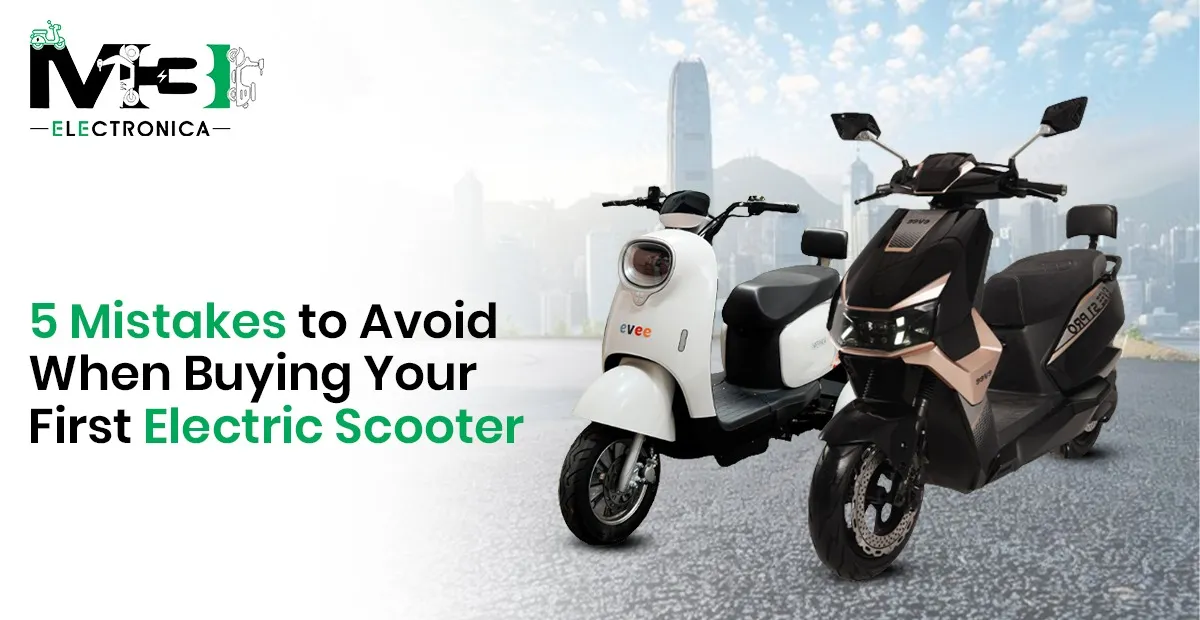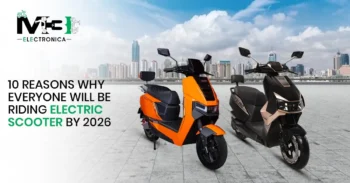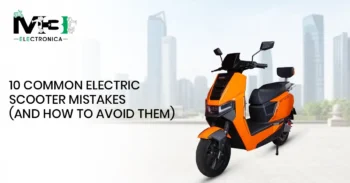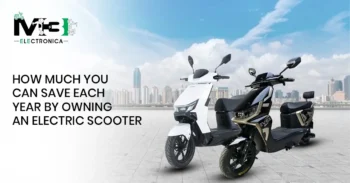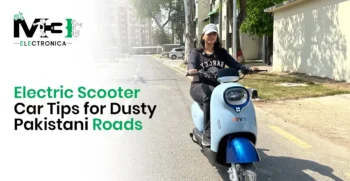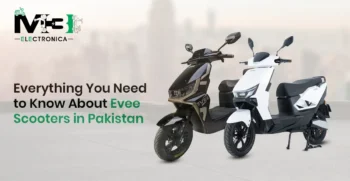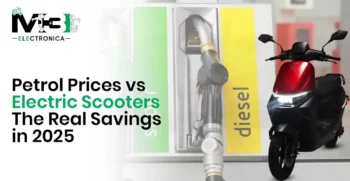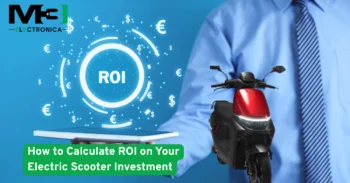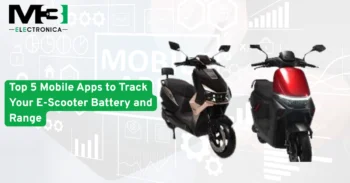Buying your first electric scooter is both exciting and overwhelming. In Pakistan, the market is evolving rapidly, with new models, battery technologies, and attractive dealer offers appearing almost every month. For beginners, this fast pace can make the decision confusing and sometimes risky. To help you make a smart investment, we’ve highlighted the five most common mistakes new buyers make — along with practical tips to avoid them, so your first electric scooter truly saves you money, time, and stress.
1) Mistake: Believing the “advertised” range without testing it
Manufacturers often state range under ideal test conditions. Real-world range depends on rider weight, speed, terrain, and whether you use AC/heavy start-stop city riding. For example, Evee lists ranges from ~55–120 km depending on the model, but independent reviews and local riding conditions usually deliver less. Always test-ride the model you want and ask the dealer for real-world figures from local customers.
Tip: Try to do a partial charge test ride in your typical commute zone (hills, stop-and-go traffic) to get an honest feel for range.
2) Mistake: Overlooking battery warranty and replacement costs
The battery is the single most expensive component. Some brands (including Evee) advertise battery warranties — commonly 12–24 months or more on premium lines — but terms and exclusions vary. Check what the warranty covers (capacity loss vs. manufacturing defects), who pays for replacement, and the expected replacement cost if out of warranty. Buying without clear warranty paperwork is asking for future headaches.
Ask the dealer: “If battery capacity drops below X% in year two, how is it handled?” Get the answer in writing.
3) Mistake: Buying from a non-authorised seller or a dealer with no service network
An electric scooter is only as good as the after-sales support behind it. Spares, software fixes, or simple repairs are much easier when you buy from an authorised dealer with a documented service network. Avoid flash deals from unknown sellers; they may offer lower upfront prices but no local servicing. Check manufacturer dealer lists and local review threads before committing.
Checklist: authorised dealer, local service centre, loaner/test ride policy, and spare-battery availability.
4) Mistake: Ignoring legal requirements — registration & license
In Pakistan, e-scooters are treated like motorbikes for many legal purposes: you generally need vehicle registration and the proper driving license class (motorcycle license) to ride legally on public roads. Failure to register can lead to fines or insurance issues. Make sure registration papers are provided and that the dealer helps with the process.
Pro tip: Ask the dealer to show a completed registration for a recent buyer — it proves they actually handle paperwork.
5) Mistake: Not calculating total cost of ownership (TCO) — charging, maintenance, resale
People fixate on the sticker price. Smarter buyers calculate TCO: electricity per charge, maintenance, battery replacement, and expected resale value.
- Typical modern scooters may use roughly 2–3 kWh per full charge depending on battery size. Using a sample residential electricity figure of ~PKR 48.84/kWh, a full charge would cost approximately:
• 2.0 × 48.84 = PKR 97.68
• 2.5 × 48.84 = PKR 122.10
• 3.0 × 48.84 = PKR 146.52.
- These are estimates — exact consumption depends on battery capacity and riding style.
- Compare that with petrol costs and maintenance savings: many local analyses show lower monthly running and servicing costs for e-scooters versus petrol bikes, but factor in battery replacement as a future cost.
Quick buyer’s checklist (do this before you pay)
- Test-ride in real traffic and check real range.
- Get full written warranty terms (battery, motor, controller).
- Confirm authorised dealer + nearest service centre.
- Verify registration and licensing support.
- Ask about spare battery price and expected life (years / cycles).
- Compare TCO (electricity + maintenance) vs. petrol alternative for your route.
Conclusion
Electric scooters make a lot of sense for Pakistan’s city commuters — lower running costs, quieter rides, and zero tailpipe emissions. But the biggest regrets come from skipping test rides, ignoring battery warranties, buying from the wrong seller, missing legal steps, or not calculating long-term costs. Avoid those five mistakes and you’ll pick a scooter that’s reliable, economical, and suited to real Pakistani roads.
FAQs
- Do I need a license to ride an e-scooter in Pakistan?
Yes — in most provinces you’ll need a motorcycle-class license and vehicle registration. Dealers usually help with paperwork. - How long do e-scooter batteries last?
Typical lifespans vary (2–5 years) depending on chemistry and care; warranty terms differ by brand. - How much does charging cost?
Depends on battery size and local electricity rates; using ~48.84 PKR/kWh, a 2–3 kWh full charge is roughly PKR 98–147 as an estimate. - Can I ride an e-scooter on highways?
Most scooters are designed for city use; check top speed and local law before taking one on fast highways. - Where should I buy from?
Buy from authorised dealers with clear service centers and warranty paperwork — avoid unverified online sellers.
Call To Action:
Ready to compare models, check local prices, or book a test ride? Visit M3 Electronica to see verified listings, warranty details, and authorised dealers — and make your first electric scooter purchase with confidence.

